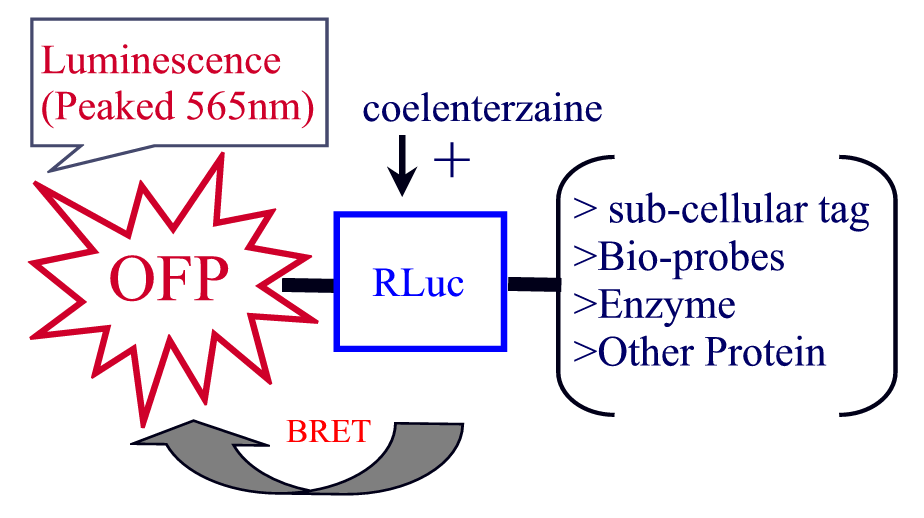Fluorescent markers and bioluminescence are two of the most commonly used methods for in vivo imaging in living cells.
Fluorescence imaging is an extremely valuable tool, but it requires external excitation from a laser light. This laser light can have drawbacks such as autofluorescence, phototoxicity, and photobleaching. On the other hand, bioluminescence imaging does not require light activation but suffers from low brightness. It is very dim and typically requires long exposure times, making it impossible to observe small, rapidly moving structures.
To overcome these barriers, an enhanced bioluminescence imaging method called Nano-Lantern was developed by Kenta Saito in 2012. This method uses a bioluminescence resonance energy transfer (BRET) approach to enhance the signal intensity of bioluminescence imaging. Nano-Lantern bioluminescence imaging has an extremely low-level background signal, making it more sensitive and quantitative. When linked to a targeting protein, Nano-Lantern emits light in response to specific biological activity, making it a great tool for visualizing specific biological activity in vivo in real-time. see scheme below.

GenTarget has leveraged its proprietary lentiviral vector systems to create a line of Orange Nano-Lantern Lentivirus products that enable highly sensitive and precise in vivo luminescence imaging. This cutting-edge technology represents a significant improvement over previous methods and is poised to revolutionize many application with in vivo imaging.